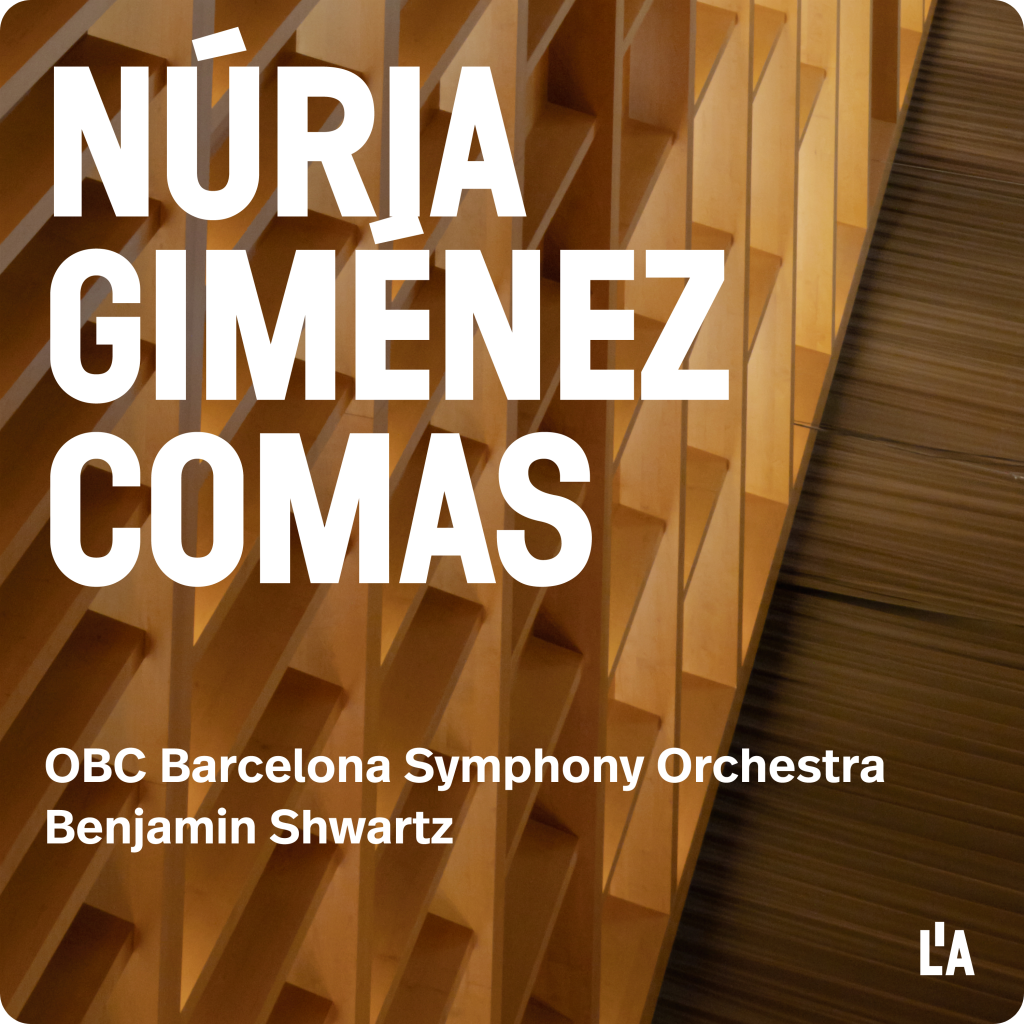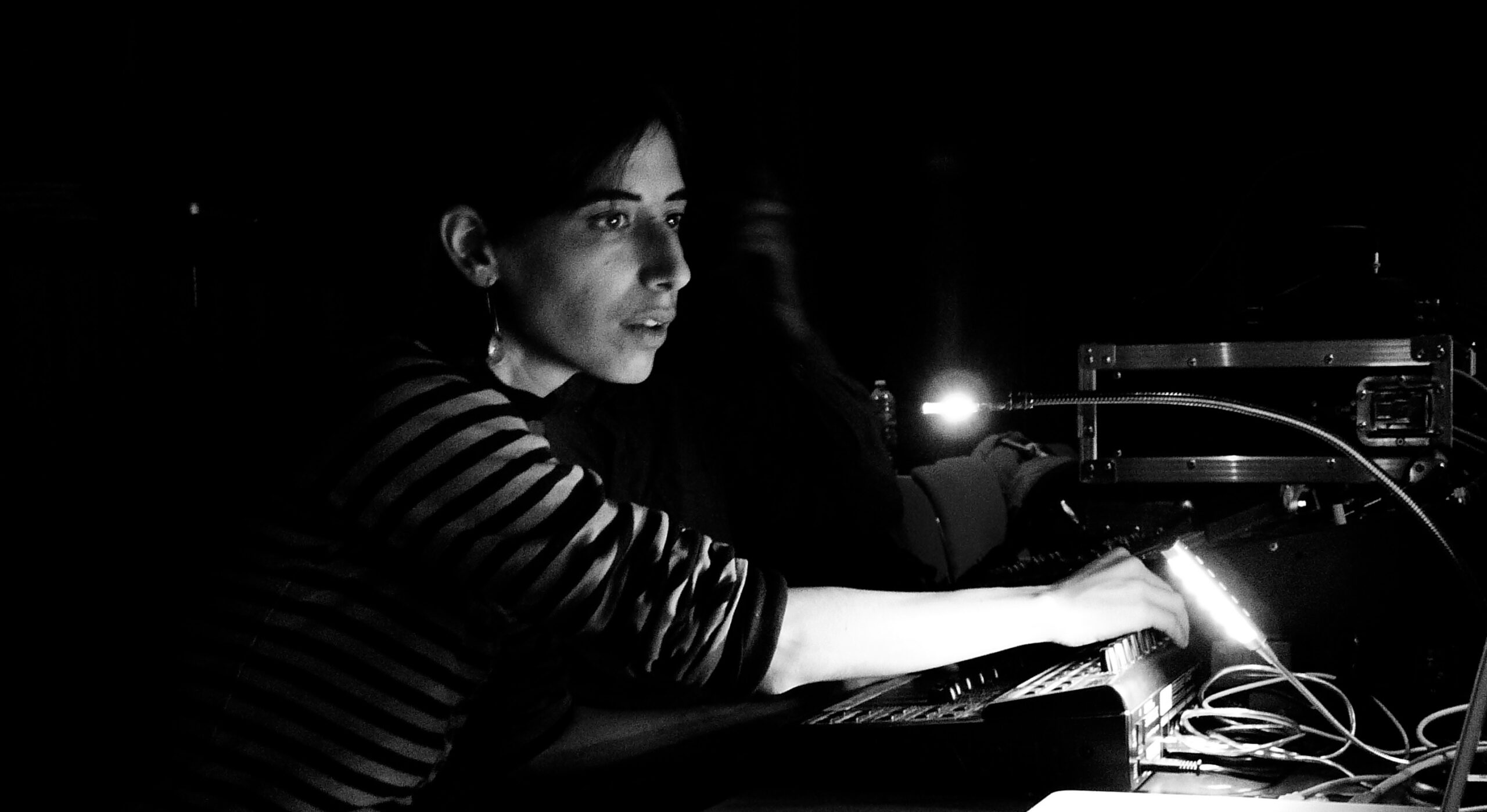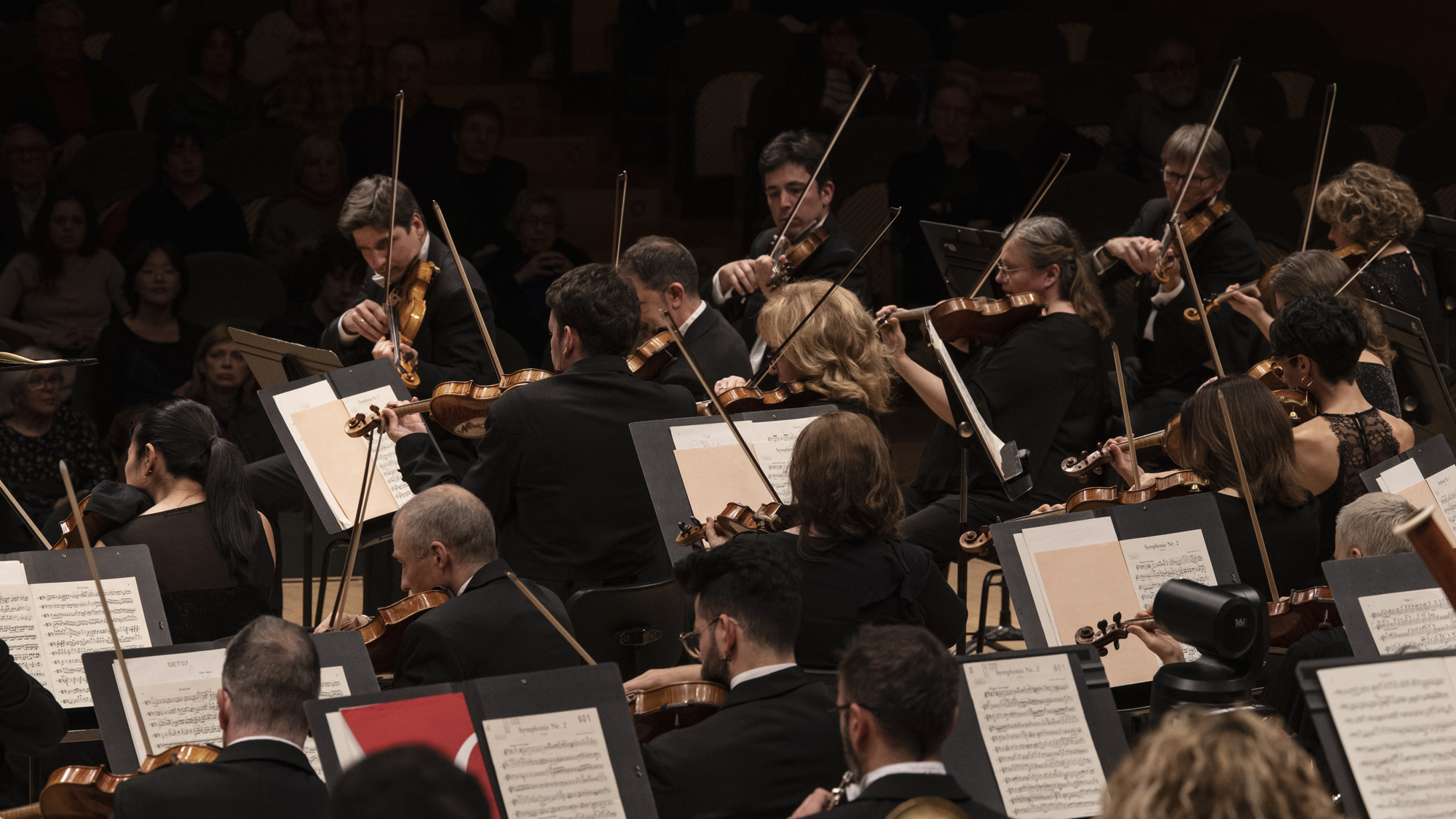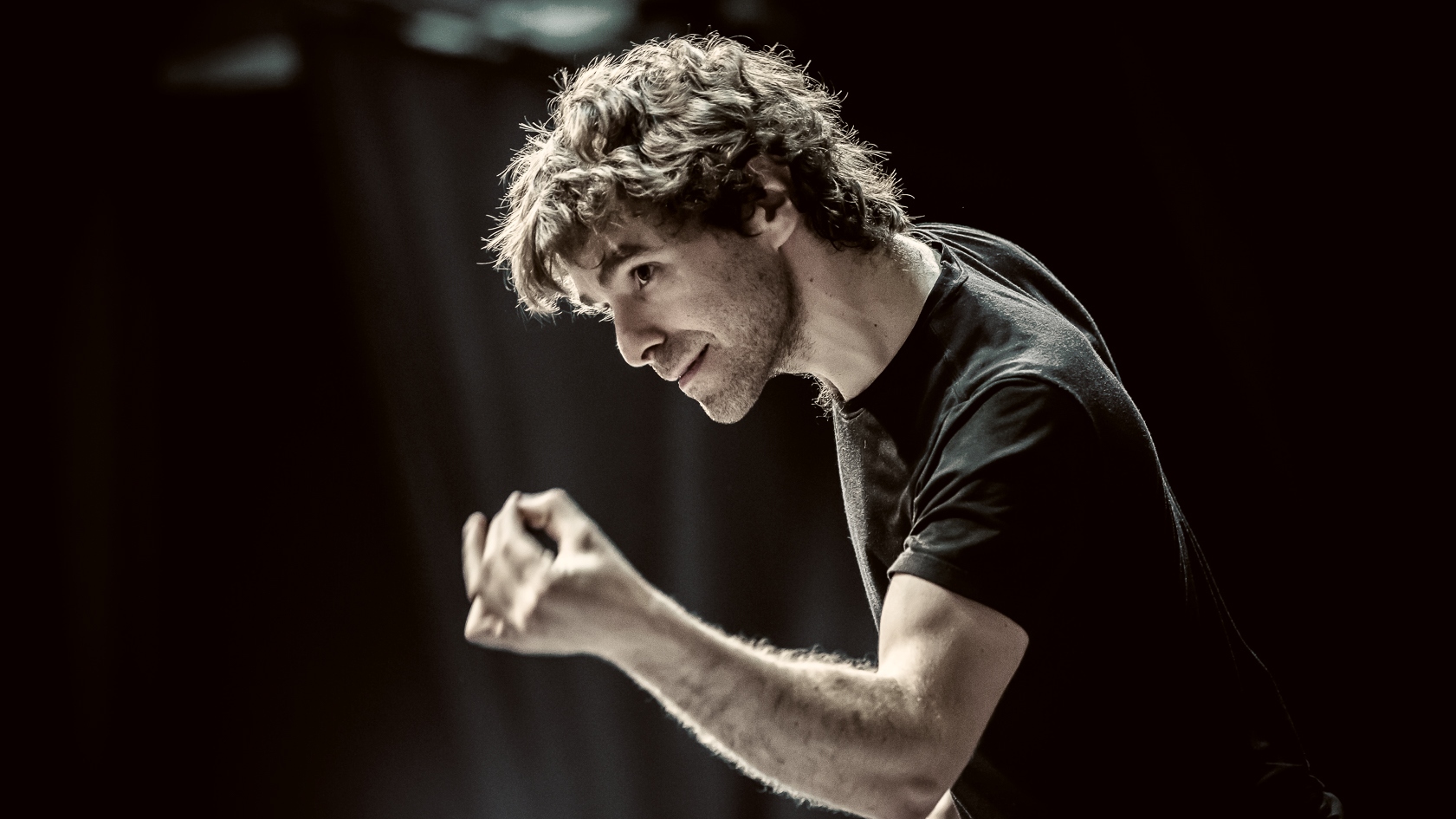
ORCHESTRAL WORKS
Liner notes by Ismael G. Cabral
Half a century ago, the American Gloria Coates showcased the expressive power of the glissando, brandished as a more than self-sufficient feature with which to create sonorous spaces that our ears could be well comfortable with. Several decades after those first monothematic experiences, in 2021 composer Núria Giménez Comas (1980) presents a work like Nostalgia of light, Yearning for…, an orchestral score in which – albeit with a different method and a different conduct – that characteristic sliding from one note to another, in rapid succession, once again takes centre stage. The glissando is a purely contemporary gesture, one could even say a calling card, a universe in and of itself used in highly diverse environments by the most outstanding creators of the second half of the twentieth century. On this occasion, the value is how our composer from Girona has integrated it into the context of a “luminous” orchestration, in her own words. To be more graphic, and even at the risk of crossing the line into the excessively poetic, we could add ‘Mediterranean’.
LA-OBC-004 | RELEASE DATE: 8 DECEMBER 2023

ORCHESTRAL WORKS
NOSTÀLGIA OF LIGHT, YEARNING FOR… (2021)
Inspired – very loosely – by Yeats’s verses in The Sorrow of Love, Nostàlgia of light, Yearning for… simultaneously seems to have arisen magnetised by that aura of mysticism that enveloped both the existence and posterity of the Irish writer. Strings and brass are engaged in descending glissandos that, if we were to isolate them from the work as a whole, could also evoke the most austere symphonic Messiaen. However, Giménez Comas insists that, rather than a reminiscence on any sort of spiritual fancifulness, her expressive work is more closely related to “a luminous idea of sound, orchestrating it, for example, through the use of crotals rubbed with a bow and sorting the results from lesser to greater spectral density”. The subsequent interpretations and understandings of a piece like Nostàlgia of light, Yearning for… are, from then on, more in the hands of attentive listeners than of the composer herself. This is the greatness of any polysemic creation that is open to perspectives. Divided into four parts, not easily discernible in a single hearing, the second section is woven together by means of a series of motifs-dialogues in the distance (by a violin soloist and trumpet). Then part three is a series of ‘small sound forests’ assembled by means of murmurings that create a microtonal melody. In the conclusion, and without overwhelming the austere aesthetic that embellishes the page, the rhythmic addition becomes more pronounced, as does the intensity that foretells the coda, enunciated by means of Brahms-like chords (!), which are reorchestrated, rethought, transmuted. Giménez Comas’s thoughts about a work like this are not restricted to the piece itself. Without the intention (at least not expressed categorically) of engendering a concert series, Nostalgia of light. Yearning for… has its correlate or, at least, finds its creative response in a very recent work to which the Catalan composer has just added a double bar. Once again, the score was stimulated by literature, on this occasion by the script Nostalgia 2175, by Anja Hilling, an «eloquent declaration of love for the past, for lost worlds and sunken happiness», according to the editor’s note. Perhaps upon listening to it, we shall once again be faced with a score that evokes another harsh universe from a stance of serenity, as the piece we recommend herein does so well.
AD LIMEN CAELI (2019)
The piece was commissioned by The Cadaqués Orchestra and premiered it in 2019 with David Robertson as the conductor. Ad limen caeli (Latin for Toward the Threshold of Heaven) is a somewhat shorter creation whose specificity, nonetheless, garners several ‘fleeting images’ of parts of Bach’s Mass in B minor (Et incarnatus est, Crucifixus, Agnus Dei). This sound intertextuality is once again cunningly present in Giménez Comas’s creation. Designed for a chamber orchestra, the piece is also dedicated to the memory of the composer and orchestration teacher Eric Daubresse, linked to the IRCAM in Paris. For this reason alone, and without being able to speak openly of a tragic atmosphere, an auditory connection is made with the aforesaid score quite quickly. The work on the harmonics and the chiselling of textures that give different forms and reliefs to Ad limen caeli creates “an inert or interior pulsation, which slowly and progressively gains prominence until it becomes the main feature, as well as the melodic motifs that later channel a stretto”. This idea of the Bachian fugue leads the author to bring to the forefront “a final image of the Mass that will steadily evaporate towards the high pitched”.

NÚRIA GIMÉNEZ COMAS
Very interested in electronic and orchestral music, she has received commissions from different musicians, orchestras and institutions, as Proxima Centauri, Geneva Camerata, Radio France, Cadaqués Orchestra, Grame-Ircam, GMEM, Mixtur Festival, CNDM, BBVA Fondation receiving support of French Culture Ministry, INAEM, SGAE Foundation. Her pieces has been played in festivals as Manifeste, Présences, Archipel, Biennale Musique en Scène (Lyon), BCNClàssics, Ibermúsica, among others. She has worked with orchestras as OCG, Brussels Philarmonic, Geneva Camerata, Orchestra of Cadaqués with conductors as Michel Tabachnik and David Robertson. And has been taking part to the Orchidea Orchestration Project.
She has been awarded in many competitions as the Prize of Colegio de España de Paris-INAEM 2012 and the 1st prize of III Edison-Denisov Competition. She has given some master-class or conferences about her music and research and about mixt music at Instituto Cervantes (Bordeaux), at Ircam Cursus and at ISCT of Zurich, Hochschule of Stuttgart among others. Very interested in creatif pedagogic projects she has worked in some institutions as the UAB, “Composers in the classroom” and other pedagogic commissions.
She has been invited to take part of competition jurys as Colegio de España de Paris-INAEM, and Young Composers Prize of SGAE, National Music Prize 2018.

OBC BARCELONA SYMPHONY ORCHESTRA
Benjamin Shwartz
FIRST VIOLINS Vlad Stanculeasa, concertino / Maria José Aznar / Walter Ebenberger / Ana Galán / Natalia Mediavilla / Katia Novell / Pilar Pérez / Jordi Salicrú | SECOND VIOLINS Emil Bolozan, assistant / Maria José Balaguer / Jana Brauninger / Patricia Bronisz / Clàudia Farrés / Mireia Llorens / Robert Tomàs VIOLAS Duccio Beluffi, guest soloist / Josephine Fitzpatrick, assistant / Franck Heudiard / Michel Millet / Jennifer Stahl CELLOS Jose Mor, soloist / Vincent Ellegiers / Marc Galobardes / Jean Baptiste Texier | DOUBLE BASS Christoph Rahn, soloist / Matthew Nelson | FLUTES Francisco López, soloist / Beatriz Cambrils / Ester Esteban | OBOES Disa English, soloist / José Juan Pardo / Molly Judson, English horn | CLARINETS Larry Passin, soloist / Francesc Navarro / Josep Fuster, assistant and clarinet in Eb / Alfons Reverté, bass clarinet | FAGOTS Silvia Coricelli, soloist/ Noah Cantú / Slawomir Krysmalski, contrabassoon | TRUMPETS Juan Manuel Gómez, soloist / David Bonet / Juan Conrado García, assistant | TRUMPETS Mireia Farrés, soloist / Adrián Moscardó / Raúl Calvo | TROMBONES Eusebio Sáez, soloist / Vicent Pérez / Raúl García, bass trombone | TIMPANI Marc Pino | PERCUSSION Juan Francisco Ruiz / Ignasi Vila / Miquel Angel Martínez | ARPA Magdalena Barrera, soloist | LIBRARIAN Begoña Pérez | PLANNING DIRECTOR: Joan Cortés
PHOTOS May Zircus | SOUND ASSISTANT Toni Vila | MUSIC PRODUCTION AND SOUND Sylvain Cadars | GRAPHIC DESIGN Lorena Alonso Noblom | EDITORIAL DIRECTION Santi Barguñó
Album recorded on January 26 and 27, 2021 in Sala 1 Pau Casals, L’Auditori de Barcelona.
Supported by

